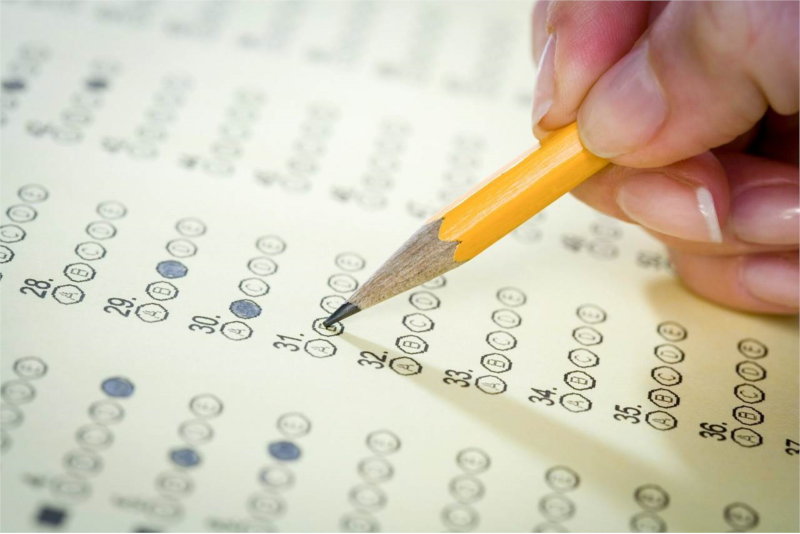Introduction to the SAT Exam
The SAT exam is recognized as one of the most important and reputable standardized tests in the realm of university and higher education institution admissions in the United States. Widely used to assess students' academic and cognitive skills across various domains, the SAT exam stands out for its extended duration, allowing students the opportunity to enhance their skills over time and attain suitable readiness for admission to their desired universities.
Focusing on fundamental academic and cognitive skills of students, the SAT exam evaluates them to their maximum potential. It comprises diverse sections including Reading, Writing and Language, and Mathematics, each individually assessing specific skills of students. Therefore, the SAT exam serves as a powerful tool for assessing students' abilities and readiness for university admission, holding significant importance in the student admission process.
History and Background of the SAT Exam
Throughout its history, the SAT exam has evolved as a tool to measure students' abilities and skills across various domains. First administered in 1926 by the College Board, it quickly established itself as one of the most important standardized tests for university admissions in the United States. Since then, the SAT exam has been widely used as a primary criterion for student admission to universities, exerting profound effects on the student admission process.
Continuous changes and improvements in the structure and content of the SAT exam reflect relentless efforts made by the College Board and other relevant organizations. These efforts aim to better align with students' needs and enhance methods for assessing their skills and abilities, thereby increasing the credibility and validity of the SAT exam as an effective tool for evaluating students' performance in crucial academic stages.
Objectives and Importance of the SAT Exam
Similar to other standardized tests, the SAT exam pursues multiple objectives, with one of the most important being the measurement of students' academic and cognitive abilities. Through assessing language, mathematical, and analytical thinking skills, the SAT exam evaluates students' readiness for university admissions. Thus, one of the primary objectives of the SAT exam is to provide a logical and reliable criterion for selecting suitable students for universities.
Moreover, the importance of the SAT exam for students during the admission process in universities and higher education institutions is exceedingly high. The scores obtained in this exam can significantly impact decisions related to student admissions and, as a result, the SAT exam is used as a primary factor in evaluating candidates for entry into universities. Consequently, the SAT exam plays a crucial role in students' academic journey and pursuit of their educational aspirations.
Overall Structure and Main Components of the SAT Exam
The overall structure of the SAT exam comprises three main sections, each independently evaluating various skills of students. These three sections include: the Reading section, the Writing and Language section, and the Mathematics section. In the Reading section, students encounter diverse texts in fields such as literature, social sciences, and natural sciences, and must demonstrate their ability to analyze and comprehend the content of these texts. This section of the SAT exam can help students improve their reading and analytical thinking skills and enhance their readiness for success in subsequent academic courses.
Reading Section
The Reading section of the SAT exam provides students with the opportunity to engage with diverse texts in the fields of literature, social sciences, and natural sciences, allowing them to practice their reading and content interpretation skills. In this section, students encounter various texts such as articles, plays, short stories, and scientific articles, and they are required to demonstrate their ability to analyze and understand the content of these texts. This section of the SAT exam can help students improve their reading and analytical thinking skills, enhancing their readiness for success in subsequent academic courses.
Writing and Language Section
The Writing and Language section of the SAT exam provides students with an opportunity to assess their writing and language skills. This section includes questions that allow students to practice correcting writing errors in various texts, such as sentences, short responses, and essays. Additionally, this section evaluates various language concepts, including the use of words and phrases, correcting grammar errors, and identifying differences in sentence meanings. The Writing and Language section of the SAT can help students improve their writing and language skills and enhance their readiness for advancement in subsequent academic stages.
Mathematics Section
The Mathematics section of the SAT exam offers students the chance to evaluate their mathematical concepts and skills. This section includes diverse questions from various mathematical domains such as algebra, geometry, probability, and statistics. It enables students to challenge their mathematical abilities and computational thinking through problem-solving, logical reasoning, and application of mathematical concepts. This section of the SAT exam is crucial for students as it indicates whether they possess the ability to solve mathematical problems and if they are prepared for further academic courses.
Strategies and Tips for the SAT Exam
For better preparedness for the SAT exam, it's essential to first develop an effective study plan. This plan should include setting study times, allocating time for each section of the exam, and prioritizing study areas. For instance, your study plan may be tailored to address specific weaknesses in certain sections of the exam, such as dedicating more time to studying and practicing math problems if you have a particular weakness in that area.
Moreover, utilizing diverse educational resources plays a crucial role in preparing for the SAT exam. Various resources including textbooks, online resources, instructional courses, etc., can help you comprehend the required concepts and strengthen the necessary skills for solving questions. Choosing resources that align with your proficiency level and help you fully understand the concepts is highly important. Additionally, using practice tests can familiarize you with the actual exam conditions and improve your performance.
Preparation and Practice
One of the initial steps in preparing for the SAT exam is assessing your skill level. You can use previous practice tests or diagnostic exams to identify your strengths and weaknesses. This initial assessment helps you tailor your study plan based on your actual needs and approach preparation more effectively.
Subsequently, based on identified strengths and weaknesses, you should formulate a diverse practice plan. This plan includes various exercises in each section of the exam to allow you to enhance your skills and perform better in each section. For example, if your weakness lies in the math section, you should dedicate most of your time to solving math problems and understanding mathematical concepts through repeated practice. Moreover, diversity in exercises, including solving various types of questions and using different educational resources, is highly beneficial to familiarize yourself with different conditions you may encounter in the exam and improve your performance.
Final Tips and Recommendations
Paying attention to nutrition, rest, and health is highly important during the preparation period for the SAT exam. Studies have shown that proper nutrition and sufficient rest can significantly improve cognitive performance and concentration, which are vital for successful performance in the SAT exam. Therefore, consuming healthy and diverse foods, staying hydrated, and maintaining a regular sleep schedule enhance your study plan and prevent fatigue and burnout.
Furthermore, stress management and psychological strengthening are also of paramount importance. Preparing for a significant exam like the SAT may come with mental pressures that can negatively impact actual performance. Therefore, utilizing stress management techniques such as deep breathing, relaxation exercises, and concentration techniques can help reduce stress and increase self-confidence. Additionally, maintaining a positive mindset, focusing on goals, and creating internal motivation are also crucial, enabling you to present your best version during the SAT exam.




